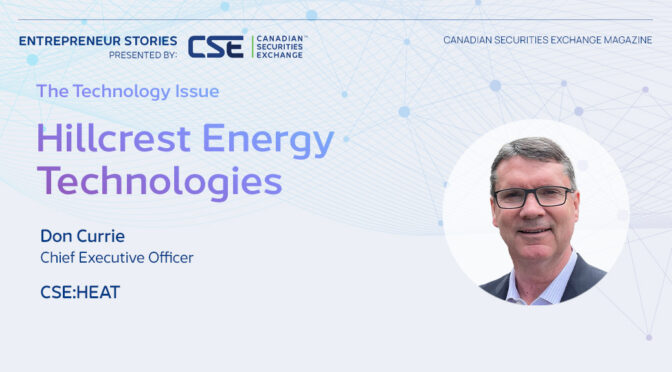Picking winners in the fast-evolving cryptocurrency, blockchain and artificial intelligence sectors isn’t easy for investors. A long list of major success stories fuels excitement about opportunities to deploy capital in both new and established companies, but as in any industry, there are also teams that were unable to reach their goals.
And yet, there is no doubt that the companies that do succeed will change the world. That’s certainly the belief at Web3 Ventures (CSE:WEBV), which offers investors exposure to entities that are pushing the boundaries for these innovative sectors.
“Look to the future and understand that things will be very different a decade from now,” says David Nikzad, the company’s Chief Executive Officer and Co-Founder. “I call it deep technology, and I think Web3 Ventures is all about community. It’s a community of people that want to bring parity to the financial system and make sure that what they get has trust and transparency.”
Nikzad got his start in digital marketing and has worked in investing for the last two and a half decades. Now, with his own fund, he’s become something of a shepherd for investors who may have misgivings about blockchain and Web 3.0.
Take the collapse of FTX, which saw US$8.9 billion in customer assets go missing under the leadership of Sam Bankman-Fried. That hurt a lot of investors, but Nikzad believes there are positives moving forward.
“It definitely shook a lot of people’s trust in crypto, but I think it was sort of a silver lining for the bigger banks to get into the industry. That drove BlackRock and others to get into the game. I think that in a weird way, it’s all going to work out perfectly, and I think that was the catalyst.”
The CEO has an optimism that borders on inevitability. He was an early disciple of the Satoshi Nakamoto white paper and bought Bitcoin before it took off.
Web3 Ventures, he says, is his endeavour to give investors the same opportunity but through an audited, publicly traded company.
In terms of exposure, Web3 Ventures has a mandate to focus on decentralized finance, healthcare, telecommunications, tokenization, venture capital, blockchain games and social media. All told, the company has deployed $2 million since its inception.
Notably, Web3 Ventures’ crypto assets are staked by a third-party custodian for greater security and fairer pricing, according to its website.
“Look at us as a liquid fund that gives somebody a community of diversified assets that they can invest in the space,” Nikzad explains.
“This is a marathon for us,” he adds. “Digital assets will become the norm. Things will be tokenized. Big board exchanges will tokenize stocks. Usually, it takes a decade for new technologies to be implemented, so the time is now.”
The Web3 Ventures team is made up of lawyers, accountants, investor relations talent and broker-dealer experts, nearly all of whom have a capital markets background.
“My co-founder, Jason Hobson, is a securities lawyer,” Nikzad says. “I think that’s really useful in terms of reaching critical mass — getting people like that involved.”
“We’re not some kid that, you know, left Harvard and decided to use customer funds to pay for some condo,” he quips.
For the skeptics, Nikzad points to his track record.
“In one year, we built a company that, fully diluted, has a $100 million market cap. We look at all the investments we’ve made today, and our failure rate is very low,” he says.
“We put our own money on this; we didn’t go and beg for funding. Obviously, it’s always nice to get funding but almost a little antithetical to the whole Bitcoin decentralized finance kind of ethos. We practice what we preach.”
Nikzad in many ways embodies the DeFi ethos.
Take generative AI, which Nikzad believes has the potential to change the way consumers interact with nearly every industry on the planet, particularly in an age of declining social trust.
“People don’t trust anybody. They don’t want to go to the doctor. Instead, they want to go to a website,” he notes. “I call it WebMD 3.0”
Nikzad, for his part, says he hasn’t been to a doctor in three decades. Why would he, he says, if there are large language models and data sets that can deliver information that’s just as good.
“[The skeptics represent] the old guard,” he exclaims.
Looking ahead, Nikzad believes tokenization, crypto and blockchain will follow the same path that social media companies took over the past decade and a half to become mainstream.
“My grandmother uses Facebook. That didn’t happen in the first year of Facebook, it took multiple years,” says Nikzad. “Today, my father, my grandmother, people in my family that come from previous generations, they own crypto.”
It’s a changing world, and Web3 Ventures wants to offer investors a chance to participate in the space while it’s still in its early days.
“Do you hear any hesitation in my voice?” Nikzad asks. “No. That’s what it takes. I don’t hope and pray. We just execute and we know.”
This story was featured in Canadian Securities Exchange Magazine.
Learn more about Web3 Ventures at https://www.w3ven.com/.













